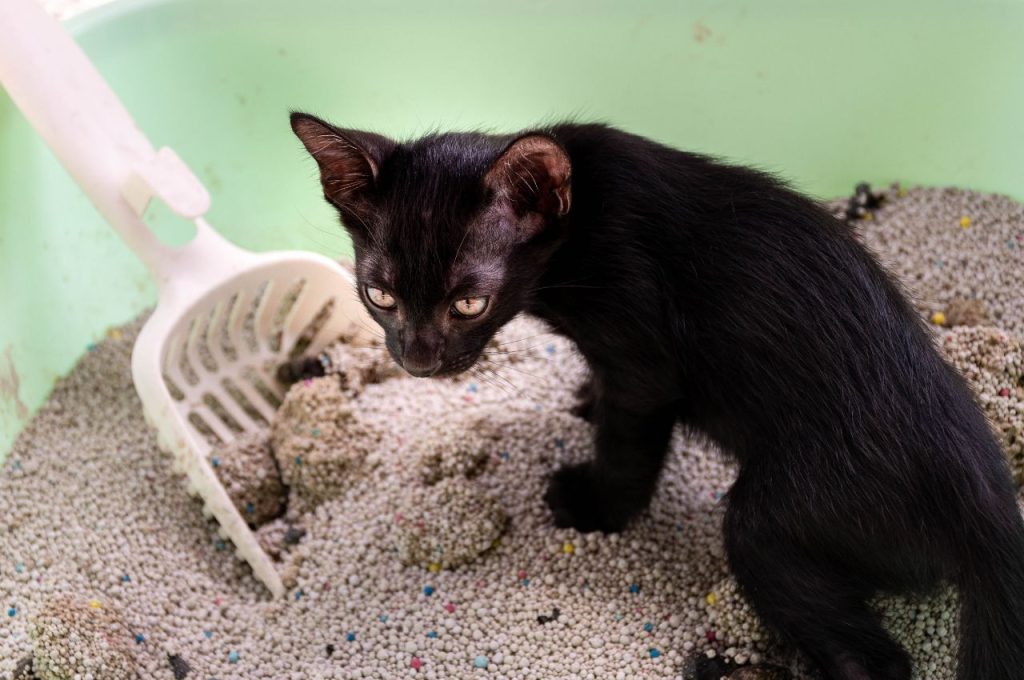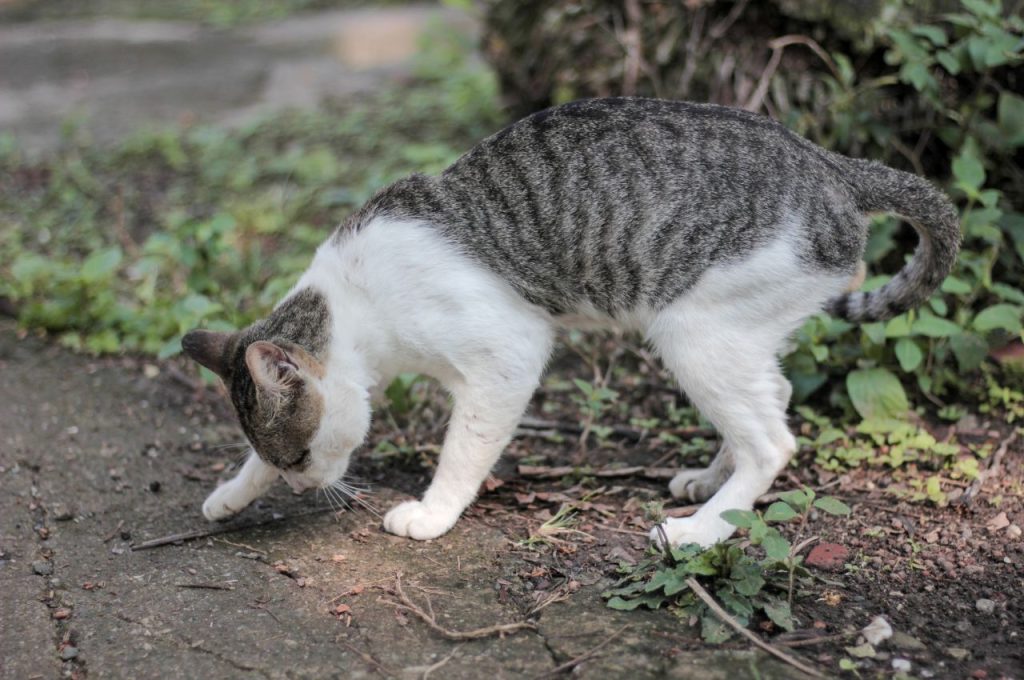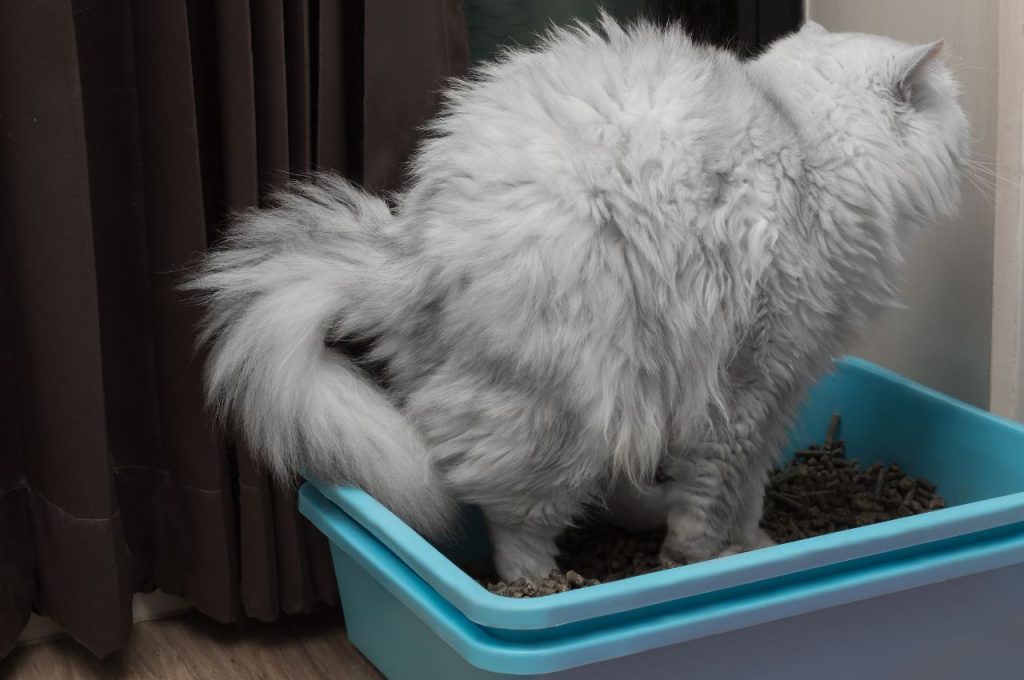When it comes to potty training a kitten, it can be a challenging endeavor. However, with the right techniques and patience, it is possible to teach your furry friends potty training.
It’s an essential part of their development and can help to create a clean and hygienic living environment for both the kitten and its owner. It involves teaching the kitten where it should be eliminated and how to use a litter box effectively. By following the right steps and being patient, you can successfully potty train your kitten. Let’s explore the basics of potty training a kitten.
The first step in potty training a kitten is to introduce them to a litter box. Kittens naturally have the instinct to dig and bury their waste, so it’s essential to provide them with a suitable place to do so. Choose a litter box that is shallow and easily accessible for the tiny kitten. Place it in a quiet and comfortable area of the house. Kittens generally prefer a litter box that offers some privacy.
Next, fill the litter box with an appropriate litter. There are various types of litter available, such as clay, clumping, or crystal litter. It’s important to choose a type that is safe for kittens and doesn’t contain any harmful chemicals. Show the kitten the litter box and gently place them inside it. They may start to explore the litter and may even start using it immediately. If not, gently take their paws and make a digging motion in the litter to demonstrate how to use it.
Potty training a kitten requires consistency and patience. Establish a regular feeding schedule for your kitten, as this will help to regulate their digestive system and make it easier to anticipate when they need to use the litter box. After meals and naps, take the kitten to the litter box and encourage them to use it. If you notice any signs that the kitten needs to eliminate, such as sniffing the ground or circling, quickly place them in the litter box.
Creating a Positive Association with the Litter Box
It’s essential to create a positive association between the kitten and the litter box. This will make the potty training process more effective and successful. Here are a few tips to help create a positive environment:

- Keep the litter box clean: Scoop the litter box daily to remove any waste and replenish it with fresh litter as needed. Kittens are more likely to use a clean litter box.
- Provide multiple litter boxes: If you have a large house or multiple levels, it’s a good idea to have multiple litter boxes available. This ensures that the kitten can easily access a litter box when needed.
- Praise and reward: When the kitten successfully uses the litter box, praise them and offer a small treat as a reward. Positive reinforcement helps to reinforce good behavior.
- Avoid punishment: Never punish a kitten for having accidents outside the litter box. This can create a negative association and make the potty training process more difficult. Instead, clean up any accidents and gently redirect the kitten to the litter box.
By creating a positive association with the litter box, you are encouraging the kitten to view it as a safe and comfortable place to eliminate. This will make them more likely to consistently use the litter box as they grow older.
If you’re struggling with potty training your kitten or if they consistently refuse to use the litter box, it’s worth consulting with a veterinarian. They can rule out any underlying medical issues that may be affecting the kitten’s ability to use the litter box properly.
If Your Kitten Avoids the Litter Box, What to Do?
If your kitten is not using the litter box consistently, there may be a few reasons. Firstly, check if the litter box is clean and easily accessible. Ensure that no obstacles are blocking the kitten’s path to the box.
If the litter box is clean and accessible, observe the kitten’s behavior and consult with a veterinarian. There may be underlying health issues or stress factors that are causing the litter box aversion. The veterinarian can provide guidance and recommend any necessary interventions.
To potty train a kitten, start by choosing a suitable litter box and placing it in a quiet and accessible area. Show the kitten the box and gently place them inside to familiarize them with it. Monitor their behavior and take them to the litter box after meals, naps, and playtime. Encourage the kitten to use the box by rewarding them with praise and treats when they do. Clean the litter box regularly, as kittens prefer a clean and odor-free area.
Common Potty Training Challenges and Solutions
Potty training a kitten can sometimes present challenges along the way. Here are a few common issues that may arise during the potty training process and tips on how to overcome them:

Accidents Outside the Litter Box
If your kitten is having accidents outside the litter box, it’s important to figure out the underlying cause. Some possible reasons include:
- The litter box is not clean: Ensure that the litter box is cleaned regularly, as kittens are more likely to avoid using a dirty litter box.
- Improper placement of the litter box: Make sure the litter box is easily accessible and located in a quiet area. Avoid placing it near noisy appliances or in high-traffic areas.
- Stress or anxiety: Kittens may have accidents if they are feeling stressed or anxious. Ensure that the environment is calm and provides plenty of opportunities for play and relaxation.
If accidents continue to occur, consider confining the kitten to a small area with their litter box, food, and water. This helps to limit their options and encourages them to use the litter box consistently.
Digging or Playing in the Litter Box
Sometimes kittens may view the litter box as a play area rather than a place to eliminate. Here’s how to address this behavior:

- Provide a separate play area: Set up a designated play area for the kitten complete with toys and scratching posts. This provides them with an alternative space for play and helps to differentiate it from the litter box.
- Gently redirect the kitten: If you notice them digging or playing in the litter box, gently remove them and place them in their designated play area. Repeat this redirection consistently to reinforce the appropriate behavior.
- Ensure the litter box is large enough: If the litter box is too small, the kitten may feel cramped and be more inclined to dig or play in it. Provide a larger litter box that allows for comfortable movement.
Consistency is key when addressing these challenges. By providing a separate play area and redirecting the kitten consistently, you can establish proper litter box usage.
Frequently Asked Questions
Here are some common questions and answers about potty training kittens.
When should I start potty training my kitten?
It is best to start potty training your kitten when they are around 3 to 4 weeks old. By this age, they have developed enough coordination and control to learn how to use a litter box. Starting early helps establish good habits and makes the process easier.
When introducing the litter box, place the kitten in it after meals or naps, as they are more likely to be eliminated at these times. Keep a close eye on your kitten and look for signs that they need to go, such as sniffing the ground or scratching near the litter box. Be patient and consistent with the training process.
How can I choose the right litter box for my kitten?
When selecting a litter box for your kitten, consider their size and accessibility. Choose a box that is low enough for them to easily step into without any difficulty. A litter box with low sides or a box with an entrance on one side can be a good option for small kittens.
Additionally, ensure that the litter box is large enough for your kitten to comfortably move around and dig. Avoid using covered litter boxes initially, as they may make the kitten feel trapped and hinder their willingness to use the box. Place the litter box in a quiet and easily accessible area of your home.
How do I teach my kitten to use the litter box?
To teach your kitten to use the litter box, start by placing them in the box after meals or naps. Gently take their paw and show them how to scratch the litter. This will help them understand that the litter box is where they should be eliminated.
If your kitten has an accident outside the litter box, gently place them in the box and praise them when they use it correctly. Avoid scolding or punishing your kitten for accidents, as this can create fear or anxiety around the litter box.
How often should I clean the litter box?
It is important to keep the litter box clean to encourage your kitten to use it consistently. Scoop out solid waste and clumps of urine at least once a day. Replace the litter and clean the box completely regularly to maintain hygiene.
Kittens are sensitive to odors, so a clean litter box will be more inviting for them. Avoid using strong-scented litter or cleaning products, as they may deter the kitten from using the box.
